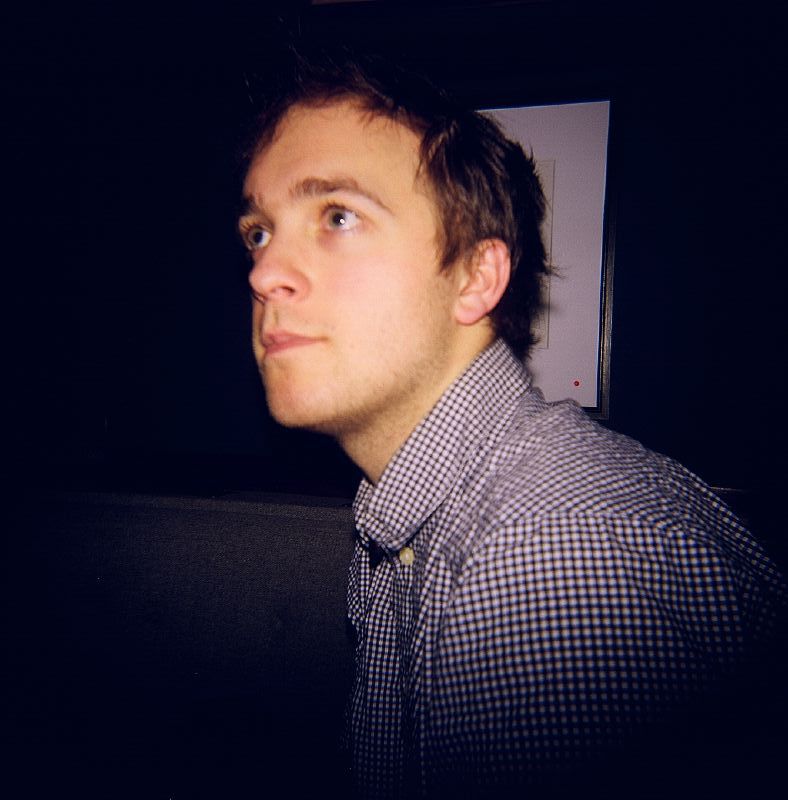(photo Eric Fischer)
Best book-browsing - the two hours spent in City Lights, wandering from one shelf to another, wonderfully overwhelmed by the selection (mentally cursing Glasgow's lack of equivalent) and sitting down on a wooden chair reminiscent of my family home's dining chairs, next to painted placards demanding change, and reading a momentary discovery, Roland Barthes' "What Is Sport?" a text for a documentary for Canadian TV by Hubert Aquin (apparently unavailable online) printed with incongruous images of English and European football from roughly 2007, including Brad Friedel saving a shot for Aston Villa, and a Chelsea and Valencia player going up for a header. Turning a corner to find Lil struggling under a weight of ten or so books, unable to choose which ones to get.
Best communal breakfast - America is supposed to be individualistic, and dinner is supposed to be the meal you go out for. At Brenda's, at 8am, it was packed with people eating amazing breakfasts and chatting to each other and the waiters and chefs. There were queues to get in at both Dottie's and then Brenda's. People wanting to get out and about early on a weekday morning.
Best intense emotion - the sheer joy at hanging out with Tobias, Dain and Neil again, all of us together in one place for the first time in seven years; the ridiculousness of that - why hadn't we done it earlier?! - but also the beautiful fact of it being halfway across the world, how we'd not managed to meet up in London all those years but had somehow managed to congregate in a magical city for a special event. Being able to remember publicly the great times we had making films and to say how happy I was to be here, in this moment, celebrating with Tobias and Tu.
Best oasis - the Tenderloin National Forest, discovered in reading City Lights-bought Rebecca Solnit's Infinite City: A San Francisco Atlas, and just around the corner from where we were staying. Set up in part by the Luggage Store Gallery (whose premises on Market Street we failed to find in 2008 and forgot to search again for this time), it exists in a small alley on Ellis Street, opposite the Glide Memorial Church (where tourists can see gospel on a Sunday morning, providing they queue early to avoid sitting in an annex and watching it on TV), and is experienced as a genuine oasis of calm and contemplative peace in the dark chaos of the Tenderloin. Ellis has a particularly large population of homeless people and drug addicts, who by day gather at corners and the entrances to convenience stores, and by night lie curled up in piles of blankets along the sidewalks up against buildings and fences. Mornings, they congregate outside Glide. There is an occasional local support worker there talking to them.
The Forest is made up of a gravel path around the edge of a garden of mixed plants and trees; there are big leafed bushes and small succulents, and there are two human-made ponds, one constructed from an old bathtub that is home to orange fish. Halfway down, under the shade of a large tree, is a small seating area. An old man with a white beard was sat there quietly when we passed, and we nodded and said "good morning".
Best use of stereotypical American phrase - the guy on the BART station wearing a SF 49ers cap and jacket, talking to his wife who may have been blind (she held a non-white stick out in front of her to guide her) who was also wearing a 49ers cap and jacket, though of a different design, who asked her to "quit busting my chops".
Best overheard mobile phone conversation - on the Muni 71 back from the Quiet Lightning reading in Golden Gate Park, a guy got on already talking on the phone. He had two long plaits of hair either side of his head that met behind to form a ponytail, and wore three or four bead necklaces that reached to his abdomen. He sat a few rows back from us, and talked loudly to a friend about a girl who "has not done anything to change my view of her character", as well as a guy they both know, though vaguely, who had been a keynote speaker at a conference at SF State, a conference at which the bus-rider had also been speaking on a panel, this mutual friend being someone "that works with the young brothers real close" at schools and I think youth clubs, someone who has realised that "that's how close" you've got to work with them: daily, in their own environment.
Best epiphany that everyone probably had ages ago - American fashion is America having a conversation with itself, mainly about subcultural groups and to a lesser extent class. This is made more clear on returning to the UK where the class element dominates. The (white) (middle-class?) youth of the US wear far more classic Western wear (those shirts with curved pockets, popper buttons, flanel and wool shirts, gimme gaps, even Levi's) than in the UK, where the current fashion, from Topshop/man right down to vintage stores and small manufacturers seems to be a convoluted, arch, raised eyebrow and above all IRONIC conversation about the UK class system; all this stuff that one way or another always seems to reference Brideshead Revisited, deck shoes, Oxford shirts, Panama hats; the very British confliction in regard to the aristocrats - revulsion/attraction. How Burberry has become a working class label. America's dominant styles are conversations between different subcultural groups, and of course far more about race, too; thin white middle-class hipsters (both male and female) referencing the hyper-masculinity of cowboys.



No comments:
Post a Comment